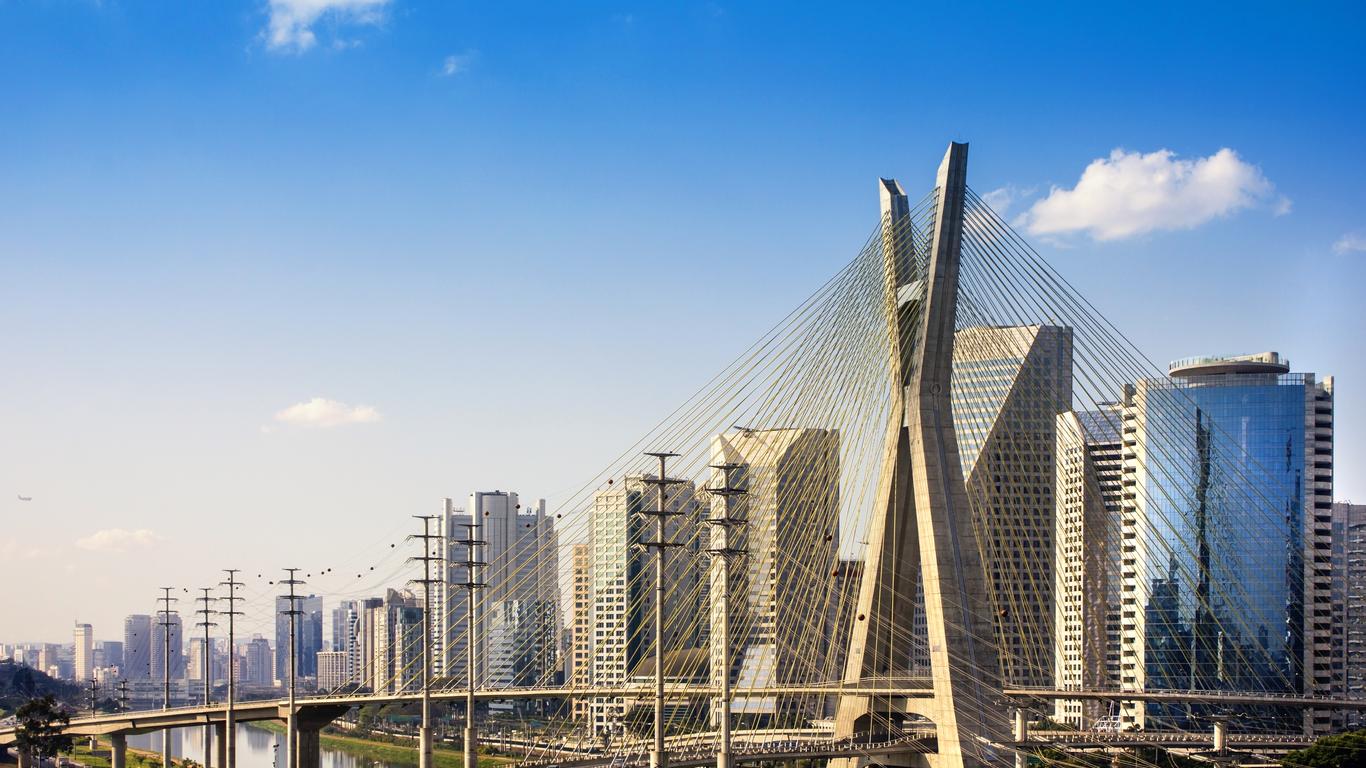The busiest airport in Brazil, São Paulo International Airport is located in the Guarulhos municipality to the north-east of the city centre. It is officially named Guarulhos–Governador André Franco Montoro International Airport after the former Governor of São Paulo and known locally as the Cumbica Airport after the district in which it is located.
São Paulo International Airport is a major hub for Avianca Brazil, Azul Brazilian Airlines, Gol Transportes Aéreos and LATAM Brasil, with major international destinations including Buenos Aires, Miami, New York, Santiago de Chile and Paris. It operates from two parallel runways and three passenger terminals, numbered from 1 to 3. Terminal 1 is the smallest and serves only domestic flights with Azul and Passaredo airlines, and is connected to the other two terminals by a free shuttle bus. Terminal 2 is the largest and functioned as the sole terminal for many years, with flights across Brazil, Latin America and a few intercontinental destinations. Terminal 3 is the latest addition to the airport and serves only international flights, predominantly long-haul intercontinental services, and LATAM Group’s Latin American destinations. It is linked to Terminal 2 by a direct walkway and features plenty of restaurants, cafes, bars and retail shops for passengers. Currency exchange facilities and ATMs are also scattered throughout Terminal 2 and 3, and lounges for select airlines and alliances are found on the upper level.
An airport bus links the terminals to São Paulo’s city centre, as well as the Tietê Bus Terminal for those travelling beyond São Paulo and to the Congonhas Airport for those with domestic connections. There are also direct bus services available with private companies from the airport to Santos, Sorocaba, São Vicente, Praia Grande, Campinas and Arujá.
São Paulo International Airport was built on the São Paulo Air Force Base during the early 1980s, and fast took over from São Paulo-Congonhas Airport as the city’s primary commercial flight facility. Its runways were extended in 1989, and the terminals enlarged to meet the increased demand, with Terminal 3 added in 2011 and capable of handling 12 million passengers a year alone.





